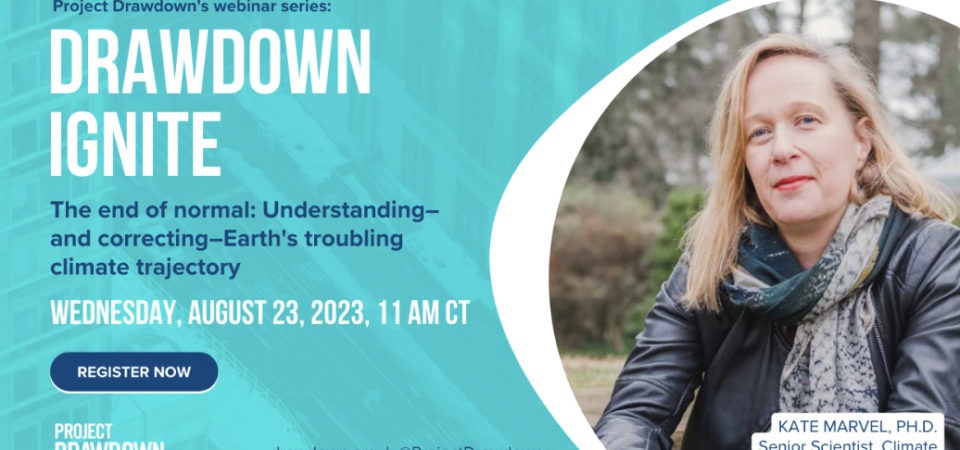Item Link: Access the Resource
Date of Publication: August 29
Year of Publication: 2023
Publisher: Project Drawdown
Project Drawdown senior climate scientist Kate Marvel explores the science behind current climate changes and future projections
In case you missed this webinar, the recording is now available.
Here are the top takeaways:
- Earth’s climate has always changed, but the change we are seeing today is unprecedented and clearly attributable to human activity. The planet is warming because of carbon dioxide, methane, and nitrous oxide. These emissions come from human activities: fossil fuel burning, land use, and industry.
- A warmer world is a stranger and more dangerous one. Rising temperatures are making heat waves likelier, longer, and hotter. They’re also exacerbating drought, making storms more extreme, causing sea levels to rise, and worsening fire risk.
- These are things we know, but there are also a lot of things we don’t know. (This is why science exists, and why I still have a job.) We don’t know how hot it will get, because we don’t know exactly how various feedback loops work. Our best estimate is that for every doubling of carbon dioxide concentrations in the atmosphere, Earth will warm around 3°C. We also don’t know how much carbon dioxide living things will absorb as atmospheric concentrations continue to grow. And we don’t know when the various gradual changes will hit “tipping points” — points of sudden and irreversible change.
- The biggest unknown of all is what humans are going to do. Science tells us that if we stop increasing greenhouse gas concentrations in the atmosphere, the warming will stop. It also tells us that we have the technology and practices we need to do so. The big question is, will we?
- Carbon storage solutions like planting trees and using machines to suck carbon dioxide from the air can be a tiny part of the solution in the long term. But the easiest way to remove carbon dioxide from the atmosphere is not to put it there in the first place. To halt climate change before it’s too late, we need to focus first and foremost on reducing greenhouse gas emissions.
- The climate benefits of cutting emissions will mainly accrue to future generations. But many technologies and practices that reduce greenhouse gas emissions also carry more immediate ancillary benefits – for example, reduced lung and heart disease from fossil fuel–generated air pollution. So it’s a win now as well as a win later on.
- Science has an important role in shaping the future – but stories have an even more important role. The story of climate change has villains. It has a plot. Now it’s all of our jobs to jump in as the heroes and bring it to a happy ending.
“We don’t know when any of these [tipping points] will be set off. But we’re not doomed. Nature does not think in degrees Celsius. Every tenth of a degree matters, every ton of greenhouse gas matters …. Ultimately, the [trajectory] is up to us.”
Watch the recording here:
This webinar is part of Project Drawdown’s new monthly Drawdown Ignite webinar series. Drawdown Ignite provides information and inspiration to guide your climate solutions journey. Updates on future webinars can be found by visiting drawdown.org/events
The views and opinions expressed through the MAHB Website are those of the contributing authors and do not necessarily reflect an official position of the MAHB. The MAHB aims to share a range of perspectives and welcomes the discussions that they prompt.
